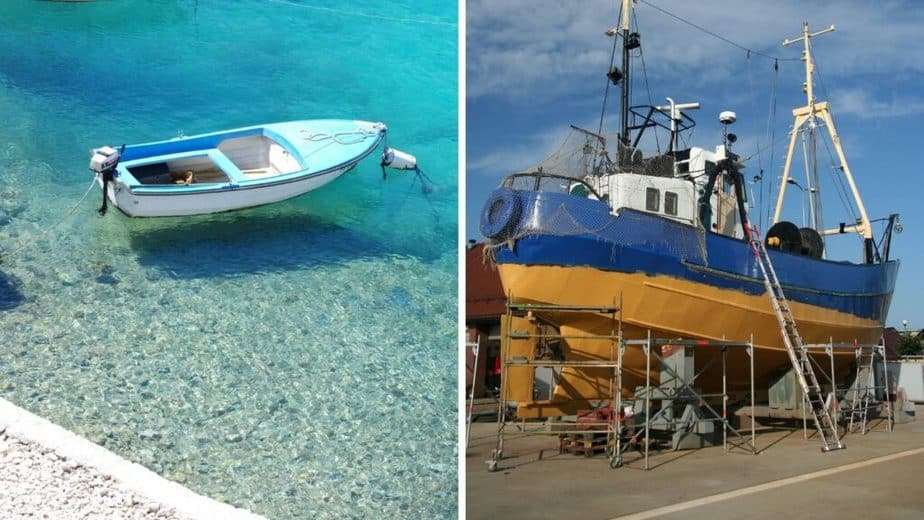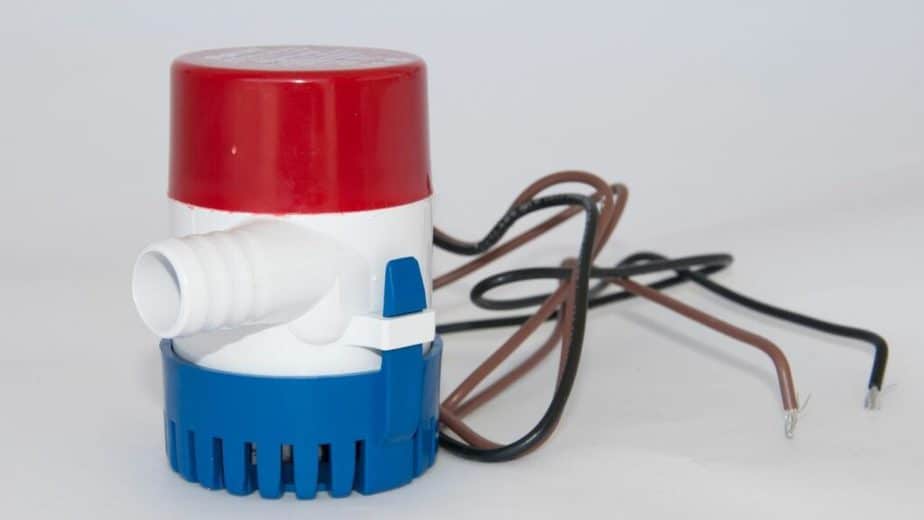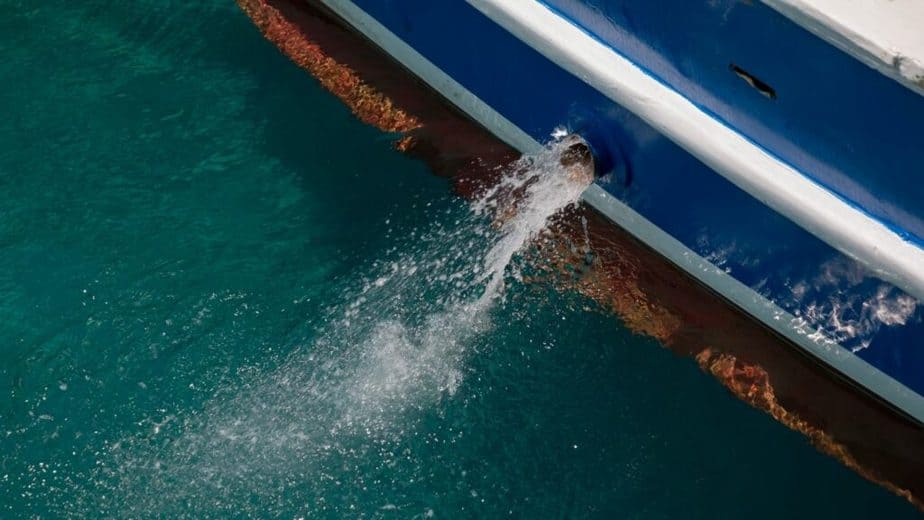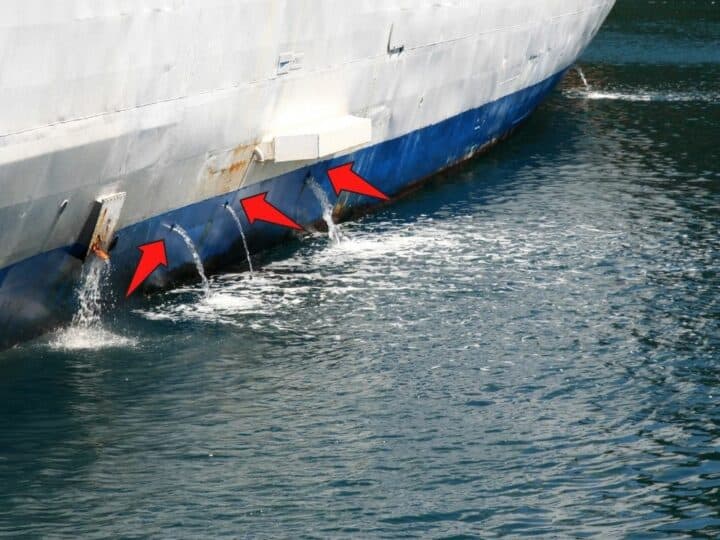What are the 3 Holes on the Back of my Boat?
In most boats, you’ll find at least one hole in the back.
The hole will have a plug, and you use it to drain water from the boat.
On large boats, stringers run from the front (bow) of the boat to the stern (rear) and partition the boat’s interior into sections.
Each section of the boat’s bilge needs a drain hole as all of the water doesn’t meet in the lower center of the boat, as it would on a small boat.
Because these spaces are large and can hold many gallons of water, giving each section its drain helps remove water from your boat faster.
Boats also have holes in the transom for the bilge pump and may have other holes that drain the boat’s live well tanks.
On inboard/outboard and inboard powered boats, you may have even more through-hull fittings for cooling your engines.
If you want to know what are the 3 holes on the back of my boat, continue reading!
Table of Contents
What are the 3 Holes on the Back of my Boat?
The 3 holes in the back of your boat are drain holes to remove water from your boat’s hull. They have removable plugs for when the boat isn’t found in the water. Holes that aren’t drain holes don’t have plugs and include a bilge pump, live well tank drains, and engine cooling outlets.
Do All Boats Have a Hole in the Back of Them
Boats as small as ten feet may have a drain hole in them, especially if it is a boat you will trailer. Some jet skis have a drain plug to rid the engine compartment of water.
The bigger the boat, the more drainage holes it will have.
Boats on trailers can reach forty feet in length, and a boat that size can hold a lot of water in its bilge.

Other holes in the back of your boat may be for bilge pumps or live bait wells.
It can be pumped out with a bilge pump, but pulling the plugs will ensure that the bilges are bone dry once a boat is on a trailer.

Letting a boat sit with water in its bilges will stink the boat up as it grows mold below the floorboards of your boat.
Also, if the boat has any wood in the bilges, standing water can cause rot.
What a Boat’s Bilge is
So, you have a bilge pump, but what is a bilge? The bilge, which is found inside of your boat, is the lowest point there is in the vessel.

On small boats with no floorboards, and the outside hull is the inside floor, a bilge is nothing to worry about.
However, the bilge is larger on boats with floorboards and engines in their bellies. Because it is the lowest point of the boat, any leaks you have from plumbing, fuel, or water tanks, from inboard engine fluids, or even rain can end up in the bilge.
That is why you have a bilge pump, and that is why you have a drain plug in your boat. A bilge that stays filled with water can indicate that you have a leak in your hull or that a water or drain line is leaking.
Why Can’t They Use One Hole as a Drain Instead of Three
On large boats, stringers can be a foot tall, and the area may hold many gallons of water. Due to their height, stringers that run fore and aft would require holes to drain the water to the boat’s center.
If boats were built in such a manner, one drain plug would work.
However, not all boats are the same, and one, two, or three drain holes are sometimes necessary.
For example, smaller boats may use stringers in their construction; however, they don’t need to be massive. Therefore, one drain hole is sufficient for draining smaller boats.
In large boats, that is not practical because it would take a very long time to drain the vessel.
Keeping water sectioned off also helps displace the weight of the water.
In addition, it makes pumping it through a bilge pump more effective.
Frequently Asked Questions about The Three Holes in the Back of your Boat
Can a bad drain plug cause my boat to sink?
Drain plugs are made of metal or plastic and have a rubber gasket. If the gasket gets brittle, it can leak.
Will a bilge pump empty the extra water from my boat?
Bilge pumps are rated by gallons per hour, and they are designed for different-sized boats.
What the 3 Holes in the Back of Your boat Are For
It may seem odd to put a hole in the hull of a boat because under certain conditions, a vessel’s through-hulls, as these fittings are called, can cause a boat to sink.
An ill-fitting drain plug can do the same and is a part you need to inspect a few times a year. The same goes for your bilge pumps.
They are your last insurance policy against a leak in your boat if you keep it at a dock.
Even if you keep your boat on a trailer, your bilge pumps need to be operable because you will need them when your boat is in the water.
Water doesn’t only get into your boat by way of through-hulls and bad plugs. Rain, use, washing, toilets, sinks, and engines can cause water to get into the bilge.
The three holes in the back of your boat will allow you to drain any water from your boat.

